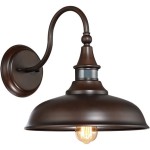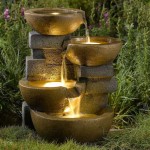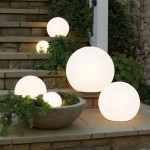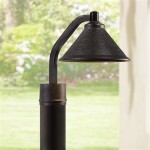Best Material for Outdoor Furniture
Selecting the right material for outdoor furniture is crucial for longevity, aesthetics, and maintenance. Different materials offer varying levels of weather resistance, durability, and comfort. Understanding the pros and cons of each material allows consumers to make informed decisions based on their specific needs and preferences.
Wood: A classic choice, wood offers natural beauty and a warm, inviting feel. Popular options include teak, cedar, and redwood, known for their natural resistance to rot, decay, and insects. Teak, in particular, is highly durable and requires minimal maintenance. Cedar and redwood are more affordable but may require more frequent sealing or staining to maintain their appearance and weather resistance. While aesthetically pleasing, wood furniture can be susceptible to fading and cracking with prolonged sun exposure and requires regular upkeep to prevent weathering.
Wrought Iron: Known for its strength and durability, wrought iron furniture is a timeless choice for outdoor spaces. Its heavy weight provides stability in windy conditions. Wrought iron can be intricately designed, adding a touch of elegance and sophistication to patios and gardens. However, it requires regular maintenance to prevent rust. Painting or powder coating provides a protective layer against the elements. Wrought iron also absorbs heat, making it uncomfortable to sit on during hot weather.
Aluminum: A lightweight and rust-resistant option, aluminum furniture is easy to move and maintain. It offers excellent durability and can withstand various weather conditions. Aluminum furniture is available in a wide range of styles and finishes, offering versatility in design. Powder-coated aluminum provides added protection against scratches and fading. While generally durable, thinner aluminum frames can be prone to dents.
Steel: Stronger and heavier than aluminum, steel furniture offers exceptional durability and stability. It is resistant to rust when treated with a protective coating, such as galvanization or powder coating. Steel furniture can withstand heavy use and harsh weather conditions. However, its weight can make it difficult to move. Similar to wrought iron, steel can absorb heat, requiring cushions for comfortable seating in hot climates.
Plastic: A budget-friendly and low-maintenance option, plastic furniture is lightweight and easy to clean. It is resistant to rust and fading, making it suitable for various outdoor environments. Advances in plastic manufacturing have resulted in more durable and stylish options, including resin wicker and synthetic rattan. However, some lower-quality plastic furniture can become brittle and crack over time, especially with exposure to extreme temperatures.
Resin Wicker: Woven from synthetic materials like polyethylene or high-density polyethylene (HDPE), resin wicker offers the look of natural wicker with enhanced durability and weather resistance. It is resistant to fading, cracking, and splintering, requiring minimal maintenance. Resin wicker furniture is available in a variety of colors and styles, offering versatility in design. While more durable than natural wicker, resin wicker can be susceptible to damage from sharp objects.
Teak: Deserving its own category due to its exceptional qualities, teak is a premium hardwood known for its natural oils and tight grain, making it highly resistant to rot, decay, and insects. Teak furniture can withstand extreme weather conditions and requires minimal maintenance. It develops a beautiful silver-gray patina over time, adding to its appeal. While initially expensive, teak furniture offers exceptional longevity, making it a worthwhile investment.
Synthetic Rattan: Similar to resin wicker, synthetic rattan is made from durable synthetic fibers, offering the look and feel of natural rattan with enhanced weather resistance. It is resistant to fading, cracking, and peeling, making it a low-maintenance option for outdoor furniture. Synthetic rattan is also lightweight and easy to move. While generally durable, lower-quality synthetic rattan can be susceptible to damage from prolonged sun exposure.
Concrete: A unique and durable option, concrete furniture offers a modern and industrial aesthetic. It is extremely heavy and stable, making it ideal for areas prone to high winds. Concrete furniture can be molded into various shapes and sizes, offering design versatility. However, its weight can make it difficult to move. Concrete can also crack in extreme temperatures, requiring sealant for added protection.
Choosing Cushions and Fabrics: The material chosen for cushions and fabrics significantly impacts the comfort and durability of outdoor furniture. Solution-dyed acrylic fabrics offer excellent resistance to fading, mildew, and stains. Olefin fabrics are also durable and resistant to moisture and mildew. Consider cushions with quick-drying foam filling to prevent mold and mildew growth. Regular cleaning and storage of cushions during the off-season can prolong their lifespan.
Maintenance: Regular maintenance is essential for preserving the appearance and extending the lifespan of outdoor furniture. Cleaning furniture with mild soap and water removes dirt and debris. Applying protective coatings, such as sealants or stains, helps to prevent weathering and maintain the furniture's finish. Covering furniture or storing it indoors during harsh weather conditions provides additional protection.

2024 Best Material For Outdoor Furniture Fabric Patio Homeadvisor

Best Material For Outdoor Furniture Covers Oakville Home Leisure

How To Choose The Best Material For Outdoor Furniture

Best Materials For Outdoor Furniture

What Is The Best Fabric For Outdoor Cushions

What Is The Best Material For Outdoor Furniture Amish

What S The Best Material For Outdoor Furniture Calgary

The Best Patio Furniture Material For Your Outdoor Space Patios Usa

Best Fabric For Outdoor Furniture And Cushions

How To Protect Your Outdoor Furniture Living Spaces







